Features to start
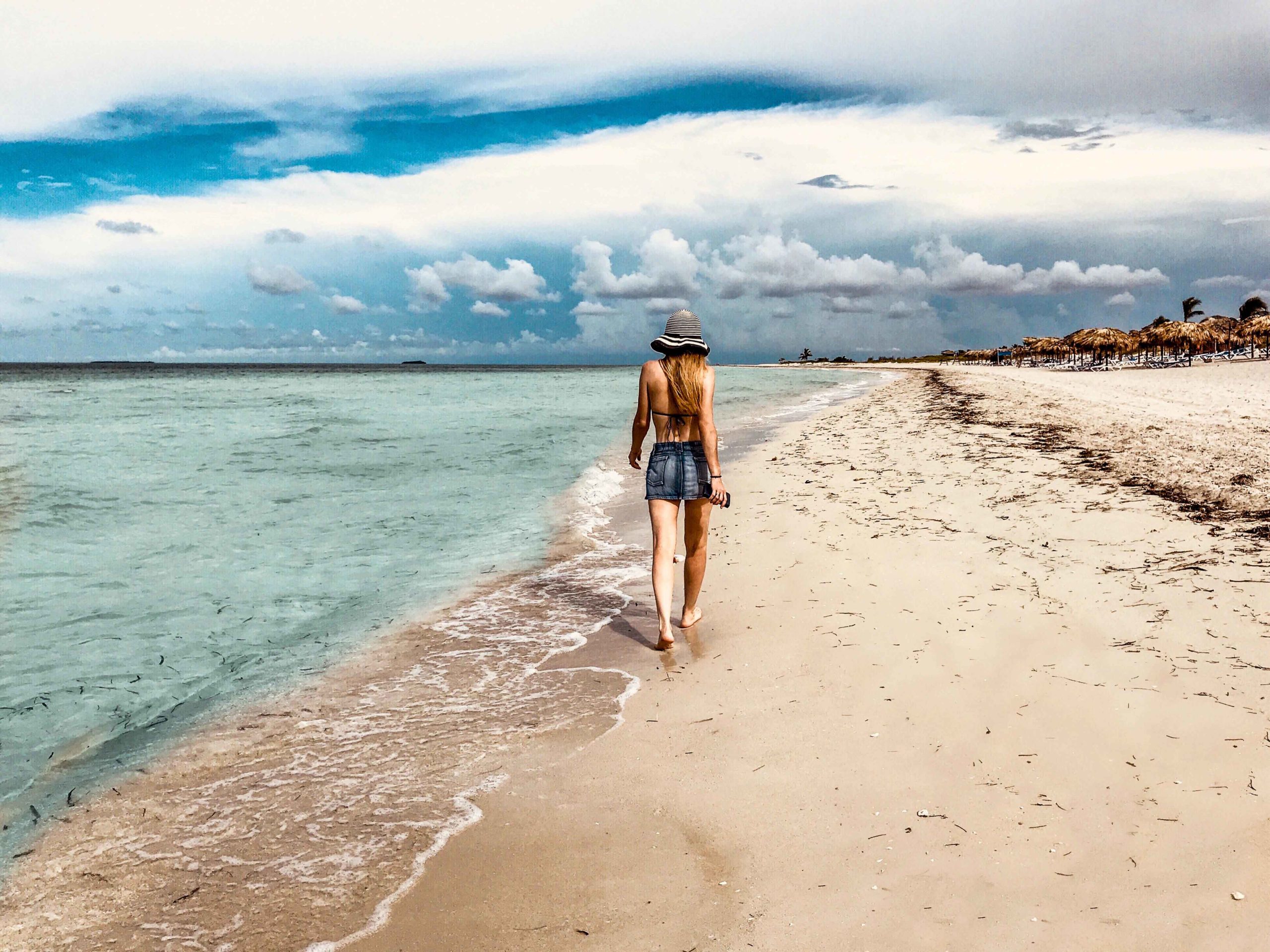
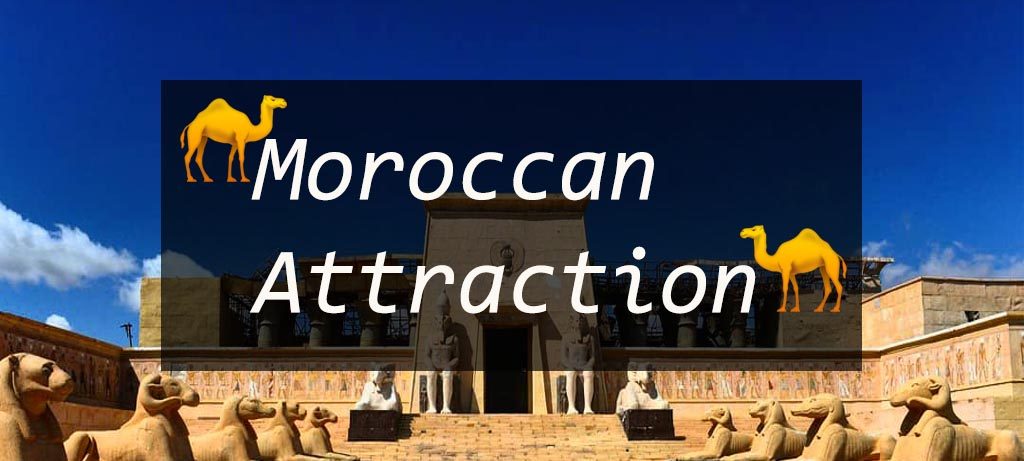
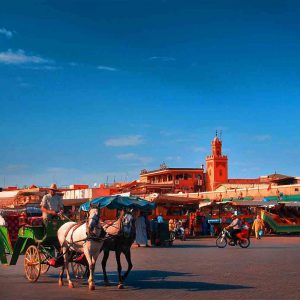
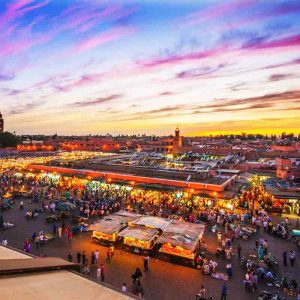
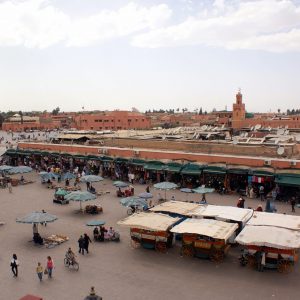
Moroccan Attractions El Fna On Marrakesh’s biggest plaza, the Djemaa El Fna, drama is everywhere. Since this square was the scene of public executions in AD 1050, the hoopla and halqa (street theatre) have never stopped. Around mid-morning, snake-charmer flutes start playing, but the performance doesn’t start until eateries start grilling and musicians tune-up.
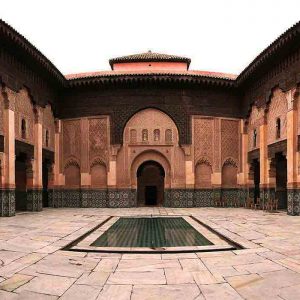
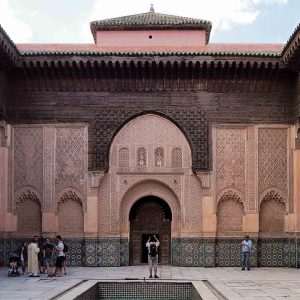
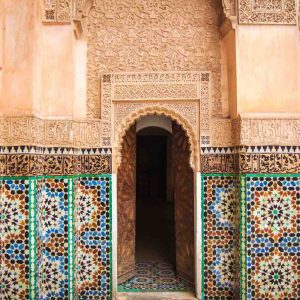
Moroccan Attractions Medersa Ali This North African Quranic instruction center is closed for repair till 2019. The benediction above the entrance, “You who enter my door, may your fondest desires be realized,” still fascinates tourists after over six centuries. With carved Atlas cedar cupolas and mashrabiyya (wooden-lattice screen) balconies, the entrance lifts sight lines, while the courtyard is a Hispano-Moresque wonderland.
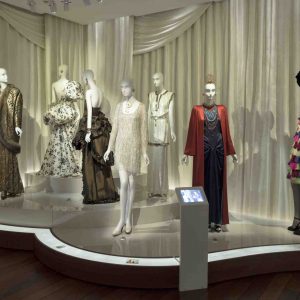
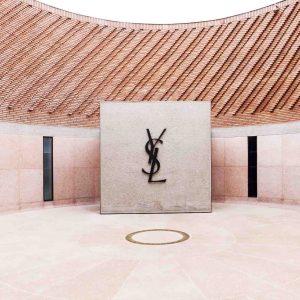

Think of it as live-action channel-surfing: everywhere you look in the Djemaa El Fna, Marrakesh’s main square, you’ll discover drama in progress. The hoopla and halqa (street theatre) has been non-stop here ever since this plaza was the site of public executions around AD 1050 – hence its name, which means ‘assembly of the dead’. By mid-morning the soundtrack of snake-charmer flutes has already begun, but the show doesn’t kick off until sunset when restaurants fire up their grills, cueing musicians to tune up their instruments.
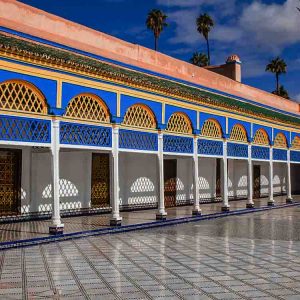
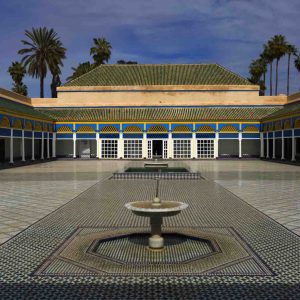
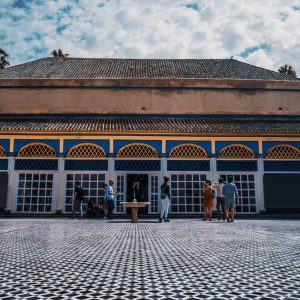
Imagine what you could build with Morocco’s top artisans at your service for 14 years, and here you have it. The salons of both the petit riad and grand riad host intricate marquetry and zouak (painted wood) ceilings while the vast grand courtyard, trimmed in jaunty blue and yellow, leads to the Room of Honour, with a spectacular cedar ceiling. The harem offers up yet more dazzling interiors with original woven-silk panels, stained glass windows and rose-bouquet painted ceilings.
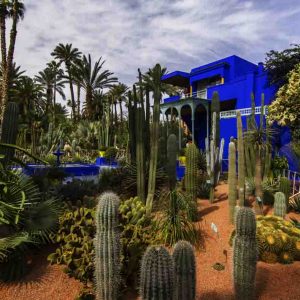
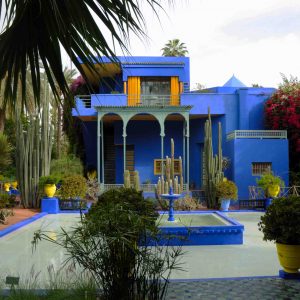
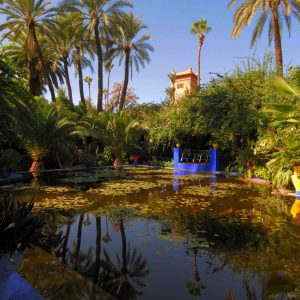
Other guests bring flowers, but French fashion designer Yves Saint Laurent gifted an entire garden to Marrakesh, the city that adopted him in 1966. Saint Laurent and his partner Pierre Bergé bought the electric-blue villa and its garden to preserve the vision of its original owner, French landscape painter Jacques Majorelle, and keep it open to the public. The garden began cultivating in 1924, and thanks to Marrakshi ethnobotanist Abderrazak Benchaâbane, the psychedelic desert mirage of 300 plant species from five continents continues to be preserved.
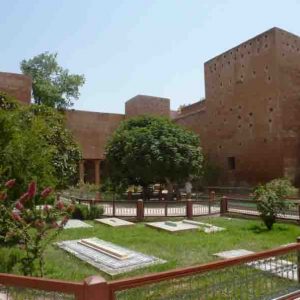
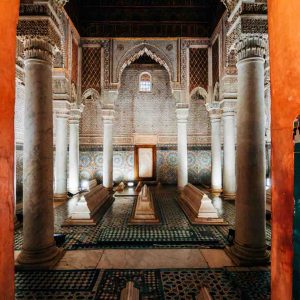
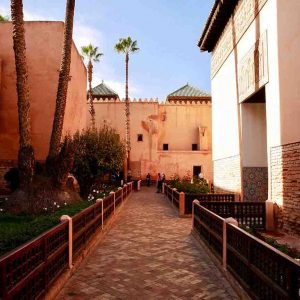
Currently closed for restoration works that are scheduled to be finished in 2019, this Quranic learning centre was once the largest in North Africa, and remains among the most splendid. ‘You who enter my door, may your highest hopes be exceeded’ reads the inscription over the entryway, and after almost six centuries, the blessing still works its charms on visitors. Sight lines are lifted in the entry with carved Atlas cedar cupolas and mashrabiyya (wooden-lattice screen) balconies, while the courtyard is a mind-boggling profusion of Hispano-Moresque ornament.
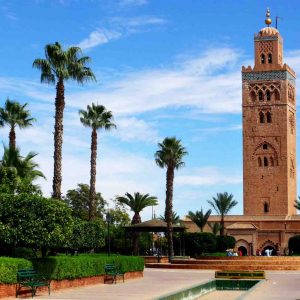
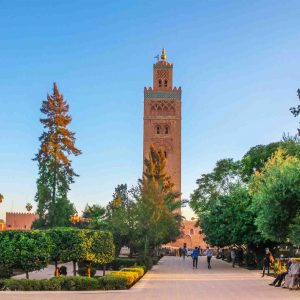
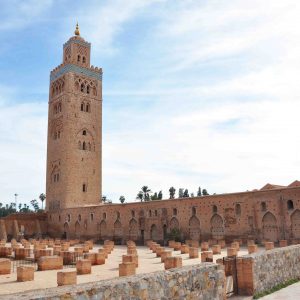
Five times a day, one voice rises above the Djemaa din as the muezzin calls the faithful to prayer from the Koutoubia Mosque minaret. Excavations confirm a Marrakshi legend: the original mosque, built by Almoravid architects, wasn’t properly aligned with Mecca, so the pious Almohads levelled it to build a realigned one. When the present mosque was finished by Sultan Yacoub El Mansour in the 12th century, 100 booksellers were clustered around its base – hence the name, from kutubiyyin (booksellers).
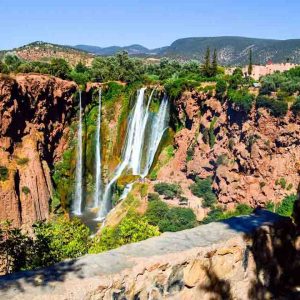
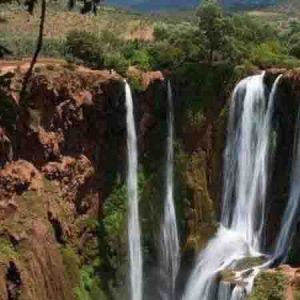
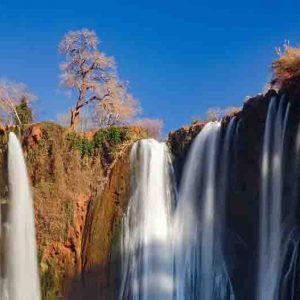
Visiting the three-tiered Cascades d’Ouzoud is one of the most popular day trips from Marrakesh, so be prepared to not have this natural idyll to yourself. On summer weekends the cafe-lined paths that lead down to the falls are filled with local families and tourists browsing souvenir stalls and taking pictures. To reach the falls, walk past the signs for Riad Cascades d’Ouzoud towards the precipice, where converging paths wind down towards the falls.
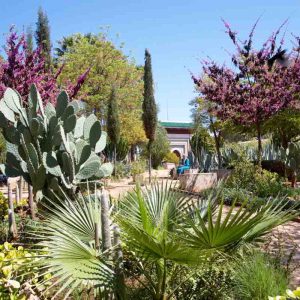
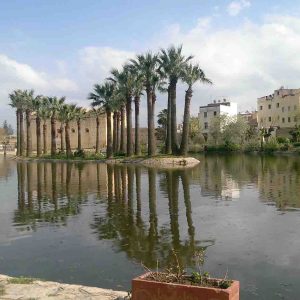
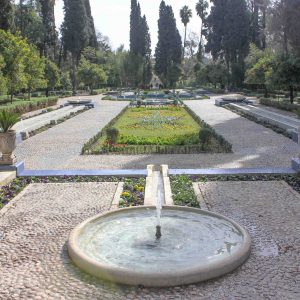
These lush gardens are a breath of fresh air after the intensity of Fez’s medina. Although more than a century old, extensive renovation and replanting have reinvigorated the gardens’ splendour, and locals come in droves to promenade the leafy trails, cool off around the grand central fountains and lounge beside the bird-filled lake – especially at dusk. The main entrance is on Ave Moulay Hassan, but there’s another at the opposite end of the park.
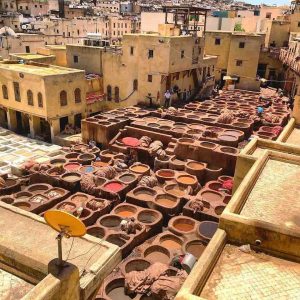
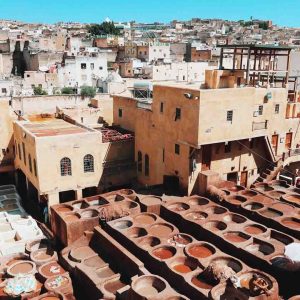
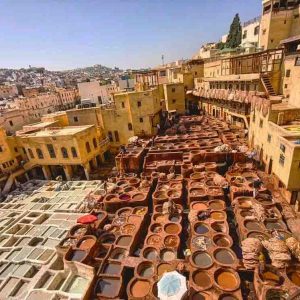
Moroccan Attractions The Chaouwara tanneries are one of the city’s most iconic sights (and smells), offering a unique window into the pungent, natural process of producing world-class leather using methods that have changed little since medieval times. In 2015–16 they underwent a year-long restoration to spruce up the crumbling environs surrounding the pits, including the viewing terraces, but fear not – the tanneries’ atmosphere remains intact. Try to get here in the morning when the pits are awash with colored dye.
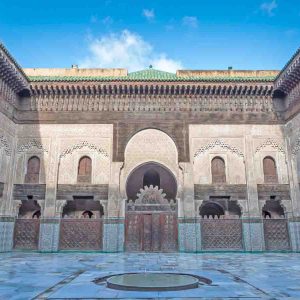
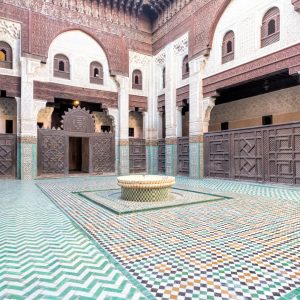
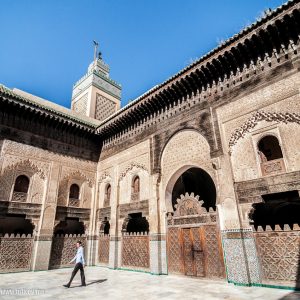
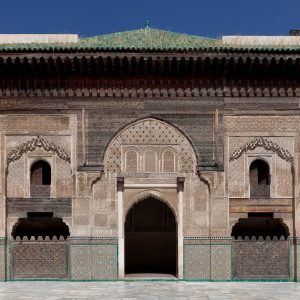
A short walk down Talaa Kebira from Bab Bou Jeloud, the Medersa Bou Inania is the finest of Fez’s theological colleges. It was built by the Merenid sultan Bou Inan between 1351 and 1357, and has been impressively restored with elaborate zellige (colourful geometric mosaic tilework) and carved plaster, beautiful cedar mashrabiyyas (lattice screens) and massive brass entrance doors. Whereas most medersas (schools for study of the Quran) just have a simple prayer hall, the Bou Inania is unusual in that it hosts a complete mosque.
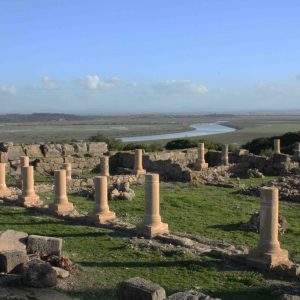
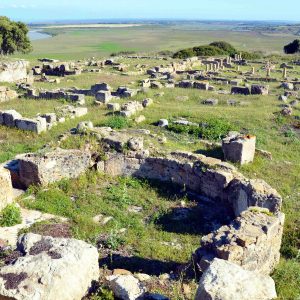
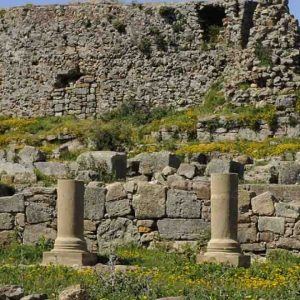
Set on a hill overlooking the Loukos Estuary, the Carthaginian and Roman ruins of Lixus are evocative reminders that settlements on this coast are among the oldest in the country. Megalithic stones found in the vicinity of Lixus suggest that the site was originally inhabited by a sun-worshipping people with knowledge of astronomy and mathematics. However, little more is known about the area’s prehistory until the Phoenicians set up the colony Liks here in about 1000 BCE. According to Pliny the Elder, it was here that Hercules picked the golden apples of the Garden of the Hesperides.
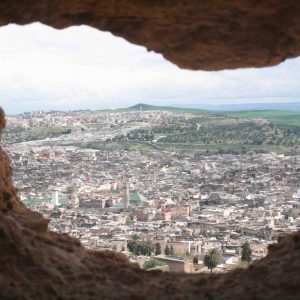
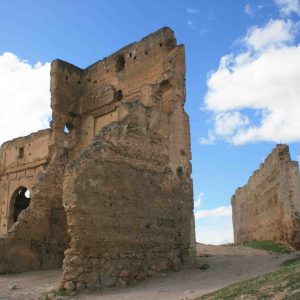
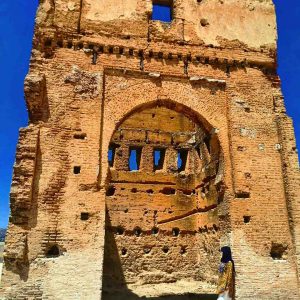
The most architecturally impressive street in the mellah (Jewish Quarter) is Rue des Mérinides, lined with houses that are distinguished by their wooden and wrought-iron balconies, as well as by their stucco work. Jewish ladies would have once sat at these upper balconies, watching the world go by and catching a cool breeze.
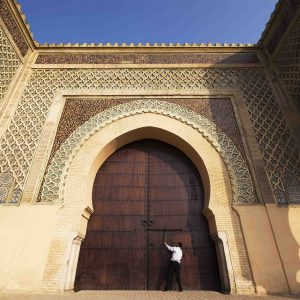
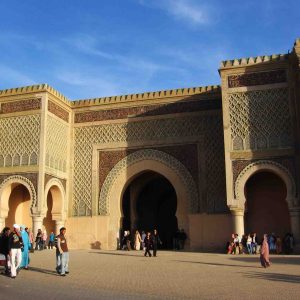
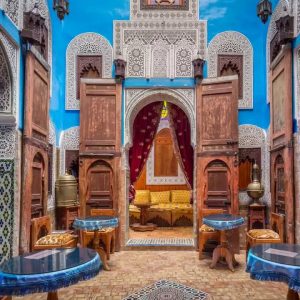
The focus of Place El Hedim is the huge gate of Bab El Mansour, the grandest of all imperial Moroccan gateways. The gate is well preserved with lavish, if faded, zellige (mosaic tilework) and inscriptions across the top. It was completed by Moulay Ismail’s son, Moulay Abdallah, in 1732. You can’t walk through the bab itself (although it’s sometimes open to host exhibitions), but instead have to make do with a side gate to the left.
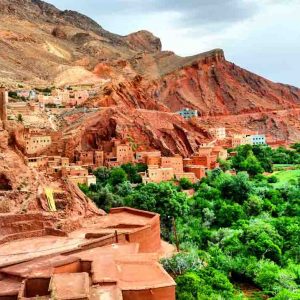
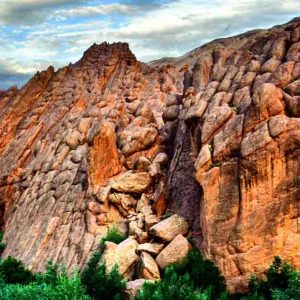
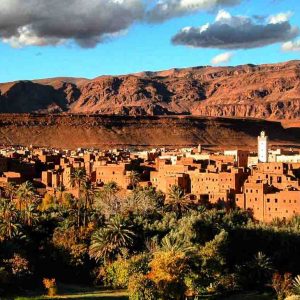
Skoura’s defining features remain its mudbrick kasbahs and vast Unesco-protected palmeraie (palm grove), earning the moniker ‘Oasis of 1000 Palms.’ Under this green canopy, a 15-mile patchwork of carefully tended garden plots are watered by an ingenious, centuries-old khettara (underground irrigation system) of locks, levers and canals. More than 100 bird species flourish here. Stay overnight in a pisé (rammed earth) guesthouse and explore the palmeraie on foot or bicycle.
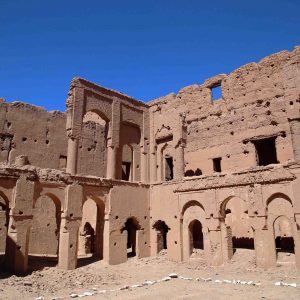
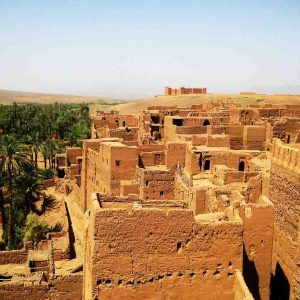
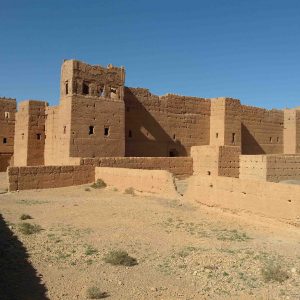
Currently closed for restoration works that are scheduled to be finished in 2019, this Quranic learning centre was once the largest in North Africa, and remains among the most splendid. ‘You who enter my door, may your highest hopes be exceeded’ reads the inscription over the entryway, and after almost six centuries, the blessing still works its charms on visitors. Sight lines are lifted in the entry with carved Atlas cedar cupolas and mashrabiyya (wooden-lattice screen) balconies, while the courtyard is a mind-boggling profusion of Hispano-Moresque ornament.
Casablanca.
Marrakech.
Tangier.
Rabat.
Agadir.
Essaouira.
Taghazout.
Chefchaouen.
Fes.
Merzouga.
and More.

Address: 86 Lot Hiba, 30000, Morocco
Phone: +212 613-504732
Email: moroccoclassictours@gmail.com
SITEMAP

